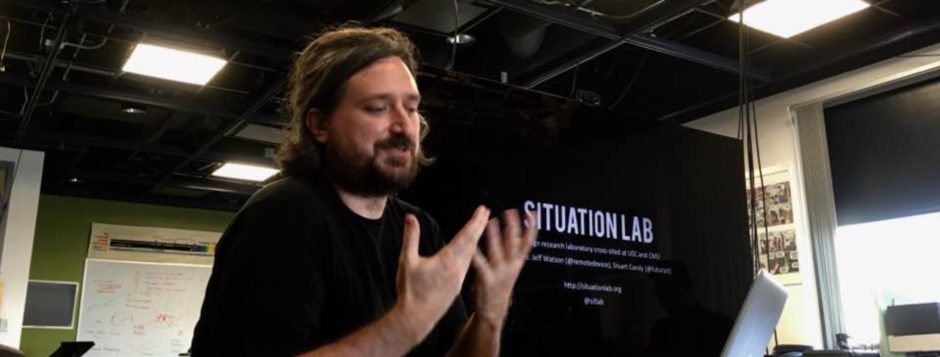Sam Ford has helpfully put together a list of ten key concepts that have been articulated in various forms on the MIT Convergence Culture Consortium‘s blog, complete with links to the relevant posts, articles and off-site resources. Here’s the list:
1.) Immersive Story Worlds. This is a concept that I developed in conjunction with my thesis work on looking at the current state and the future of the soap opera industry. The idea was to outline a category that explains narratives which are serial by nature, which have multiple creators, a sense of long-term continuity, a character backlog, contemporary ties to a deep history, and a sense of permanence. I included portions of my thesis outlining this concept–and how it relates to the Marvel and DC Comic Universes, the world of pro wrestling, and daytime serial dramas–here and here.
2.) Transmedia Storytelling. Transmedia storytelling is meant to indicate texts in which the story develops through multiple media platforms and in which new content in another platform is not simply a redistribution of the same content that has already appeared elsewhere. We have a whole category of posts about the topic here.
3.) Cross-Platform Distribution. As opposed to transmedia storytelling, cross-platform distribution is simply the reappearance of content from one platform in another, such as making broadcast television shows available in VOD, cable shows available on YouTube, etc. We also have a whole category of posts on this topic available here.
4.) Quotability. In relation to online video, I have written several times about the importance of incorporating a way for viewers to be able to clip or quote content from copyrighted material, in trying to understand the features of YouTube which make it most compelling. In other words, content owners who distribute their content in short or long-form without any user ability to pick their own clips are just providing cross-platform distribution, not anything that allows viewer autonomy other than an increasing number of platforms to view content on. See posts here, here, and here.
5.) Grabability. In conjunction with my writing about quotability, the other feature of YouTube that has attracted viewers to the spread of copyrighted material has to do with the functionality of the site that allows viewers to take the video and embed it in their blogs or other places. In other words, content can only be spreadable if it is allowed to be. Again, this is not meant as a value judgment, as broadcasting content on new media channels certainly has its value, but it does not involve that component of interactivity that has empowered the YouTube community. For more, look here, here, and here.
6.) Pop Cosmopolitanism. Henry Jenkins’ concept of pop cosmopolitanism, in short, looks at how people are experiencing other parts of the world through popular culture and also how they are sharing and connecting to their sense of home through pop culture as well. We have several posts about this concept from the site. For more, look here.
7.) Fans of Fans. This concept, as articulated here, focuses not on companies which like their fan community but rather means fandom surrounding particular fans, visible members of the fan community. When I wrote on this concept, I focused particularly on names who become well-known in discussion boards and develop their own fan followings, fans at live sporting events or pro wrestling shows who become famous in their own right for their performances, and fan fiction writers or fan television reviewers who gain their own followings.
8.) The Branding Barrel. This concept, which I wrote about last August, focuses on the metaphor for “scraping the bottom of the barrel,” looking at what happens to brands at the end of their life. I focus on yard sales, but another great piece of academic work on this topic is Karen Tranberg Hansen’s Salaula: The World of Secondhand Clothing and Zambia.
9.) Fan Proselytizing. I did not originate this phrase, but I have used it often in my research for C3 in the past year, as a way to look at viral marketing or fans as grassroots intermediaries. In short, fans “spread the word” about a brand quite actively, and this involves both trying to recruit new fans and “preaching to the choir,” bolstering the interest of less active fans. For more from my blog posts on the concept, look here, here, and here.
10.) Transgenerational Storytelling. In my writing about soap operas in particular, I have focused on how the target demographics of the modern television world have interfered with texts which are best served by drawing a transgenerational fan base. In particular, soap operas are best at transgenerational storytelling, utilizing characters and encouraging viewership from all age groups. For more, look here, here, here, and here. (C3 Blog)
